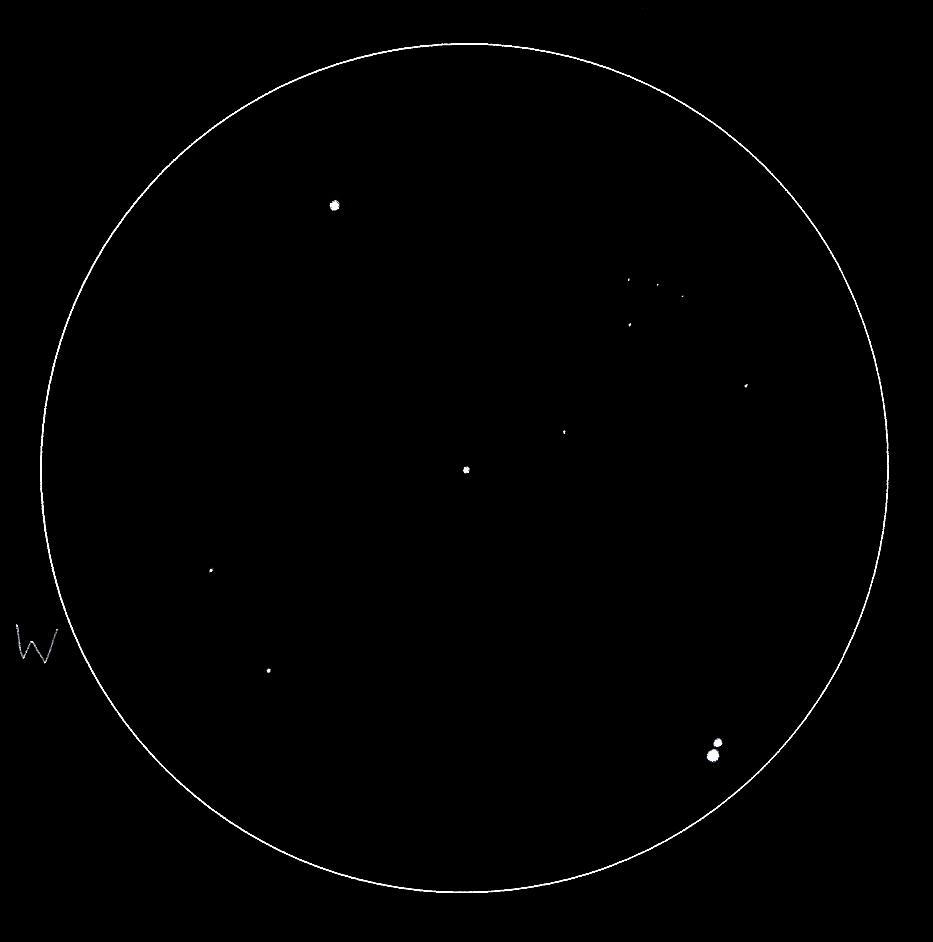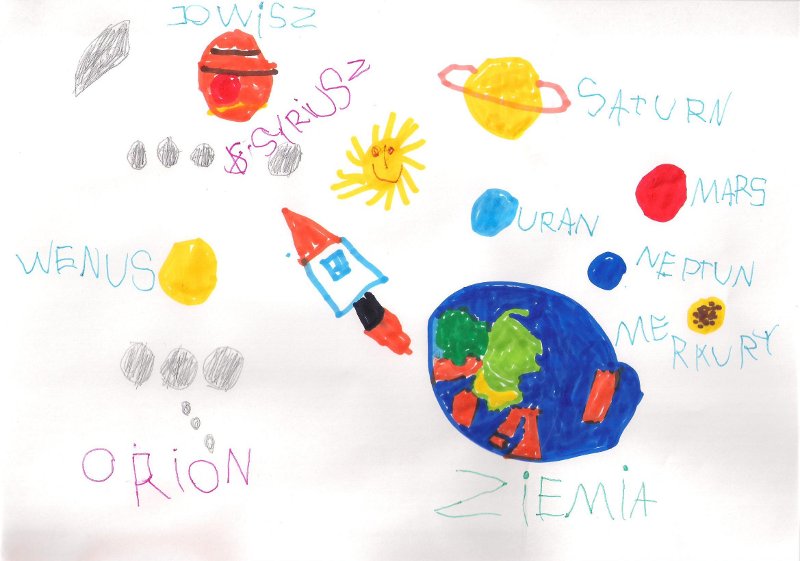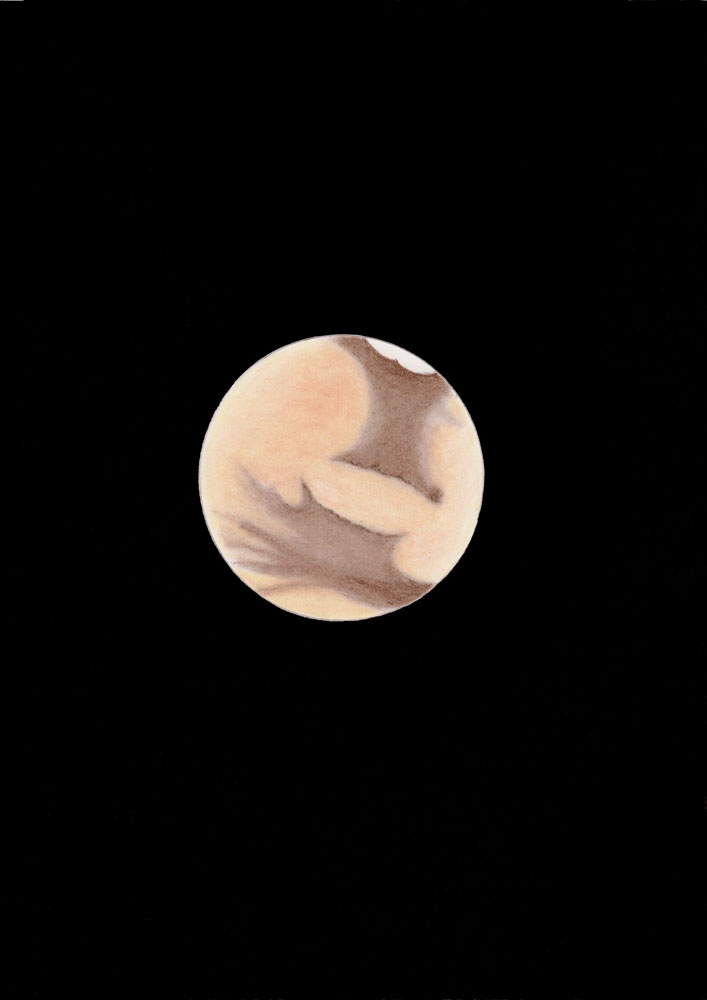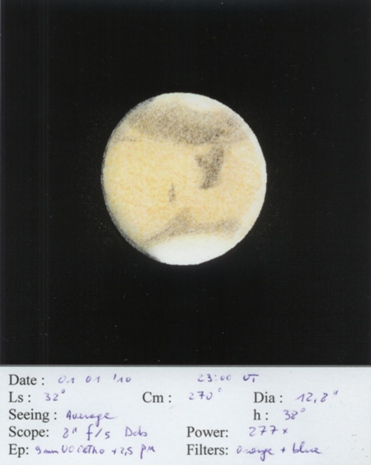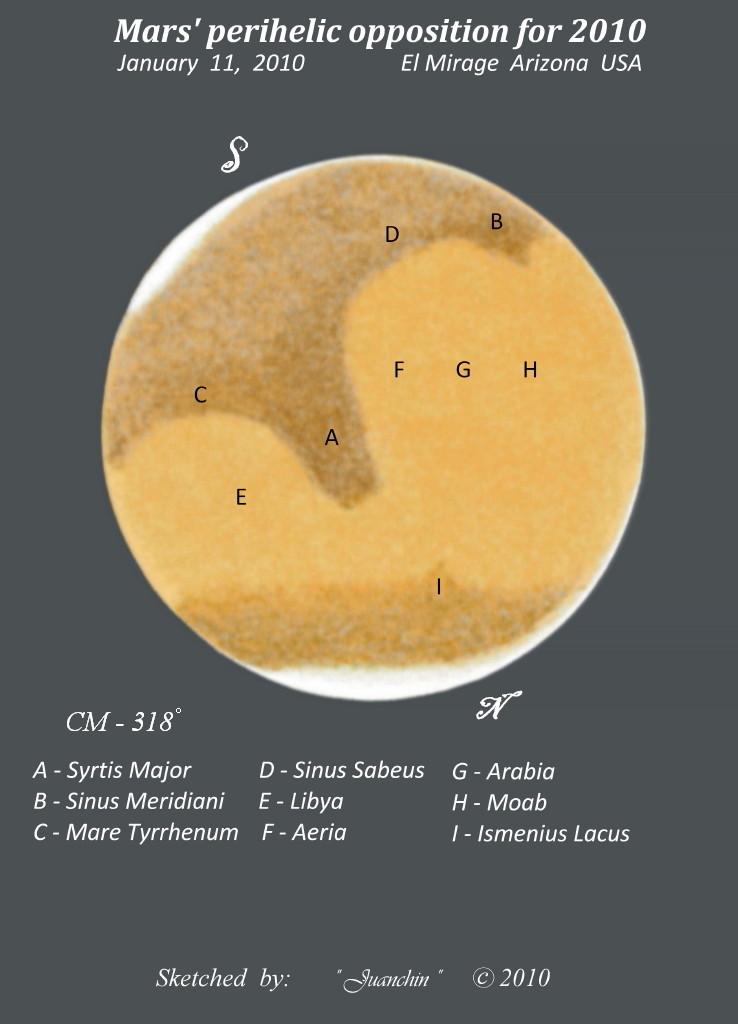
Mars – February 10, 2010
Sketch and Details by Andrew Watkinson-Trim
Pencil sketch at eyepiece with text added later. This is my first attempt at drawing Mars and also “first light” for my Skywatcher 127mm Mak’. The improvement on my old 102 SLT Celestron reflector was very marked. The seeing was reasonable, but the manual Alt/Az mount necessitated frequent repositioning of the object. This is an example of a “snatched” observing session showing that something worthwhile can be achieved in 10 minutes without dark-adaptation. I was delighted to be able to confirm the accuracy of this drawing because a friend was imaging Mars with his 8 inch Newtonian at the same time.
AWT


